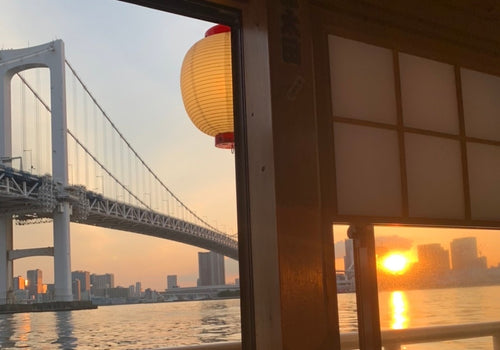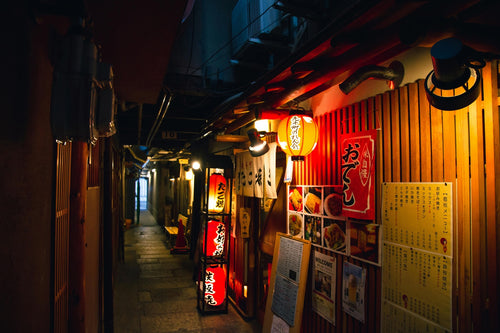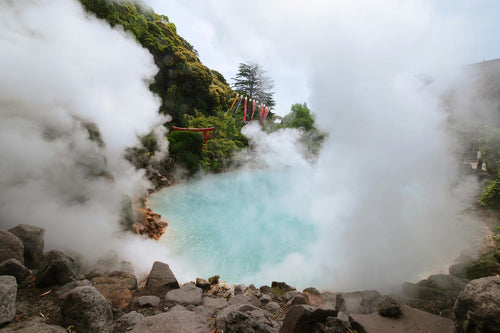
Japanese Skincare Secrets for Glowing Skin
Japanese skincare is revered worldwide for its focus on natural ingredients, simplicity, and effective techniques that promote radiant, healthy skin. Rooted in centuries-old traditions, Japanese skincare routines emphasize hydration, gentle care, and protection from environmental factors. Rather than following short-lived trends, Japanese beauty philosophy centers on consistency, balance, and nurturing the skin from within.
This guide reveals the secrets of Japanese skincare, from essential ingredients and practices to tips on creating a routine that can help you achieve glowing, healthy skin.
Contents
1. Japanese Skincare Philosophy
2. Key Ingredients in Japanese Skincare
3. Japanese Skincare Routine: Steps for Glowing Skin
4. Importance of Sun Protection
5. Lifestyle Tips for Healthy Skin
6. Popular Japanese Skincare Brands
1. Japanese Skincare Philosophy
The Japanese approach to skincare focuses on nurturing and protecting the skin, aiming for long-term health and luminosity. Instead of covering flaws, Japanese beauty philosophy emphasizes enhancing natural beauty and maintaining balance. Key principles include a gentle touch, hydration, and consistency, with a focus on prevention rather than correction.
This philosophy encourages a holistic approach, where skincare routines are intertwined with lifestyle habits, including diet, sleep, and stress management. By prioritizing skin health from within, Japanese skincare promotes radiant and resilient skin over time.
2. Key Ingredients in Japanese Skincare
Japanese skincare is known for its use of natural ingredients, many of which have been used for centuries. These ingredients are chosen for their hydrating, brightening, and anti-aging properties:
Rice Bran (Komenuka)
Rice bran is rich in antioxidants, vitamins, and minerals, making it ideal for nourishing and brightening the skin. It’s commonly found in cleansers and exfoliants, as well as in traditional beauty treatments.
Green Tea (Matcha)
Green tea is packed with antioxidants and anti-inflammatory properties, helping to soothe the skin, reduce redness, and protect against environmental damage. Matcha is frequently used in toners and serums.
Seaweed (Kelp)
Seaweed is prized for its ability to hydrate and balance the skin’s natural oils. Its minerals and vitamins promote healthy, glowing skin, and it’s often found in masks and moisturizing products.
Sakura (Cherry Blossom)
Cherry blossom extracts have gentle anti-inflammatory properties, making them suitable for sensitive skin. Sakura is commonly used in products aimed at brightening and evening out skin tone.
3. Japanese Skincare Routine: Steps for Glowing Skin
The Japanese skincare routine emphasizes layering lightweight products to deeply hydrate and protect the skin. Here are the essential steps:
Step 1: Double Cleansing
Double cleansing is the foundation of Japanese skincare. First, use an oil-based cleanser to remove makeup and sunscreen, followed by a gentle foaming cleanser to wash away impurities. This method ensures a clean slate for other products to penetrate effectively.
Step 2: Toning
Toners in Japanese skincare, often called “lotions,” are hydrating and prepare the skin to absorb subsequent products. Toners balance the skin’s pH and provide a light layer of moisture.
Step 3: Essence
Essences are a staple in Japanese skincare, providing concentrated hydration and nutrients. They are lightweight and help plump the skin, enhancing its natural glow and smoothness.
Step 4: Serum
Serums target specific skin concerns, such as brightening, anti-aging, or hydration. Japanese serums often contain high-quality ingredients like vitamin C, hyaluronic acid, and botanical extracts to address common skin issues effectively.
Step 5: Moisturizing
Moisturizers lock in hydration and help maintain the skin’s barrier. Japanese moisturizers come in various textures, from lightweight gels to richer creams, catering to different skin types and needs.
Step 6: Eye Cream
The delicate eye area benefits from extra care. Japanese eye creams are formulated to hydrate and smooth fine lines, often containing gentle, soothing ingredients for sensitive skin around the eyes.
4. Importance of Sun Protection
Sun protection is a crucial part of Japanese skincare. To prevent premature aging, hyperpigmentation, and other sun-related damage, daily application of sunscreen is emphasized. Japanese sunscreens are known for their lightweight, non-greasy formulas that provide high protection without clogging pores.
SPF products in Japan are often enriched with skincare ingredients, ensuring they protect while nourishing the skin. Applying sunscreen as the last step in the morning routine, and reapplying throughout the day, is key to maintaining youthful, healthy skin.
5. Lifestyle Tips for Healthy Skin
In addition to a regular skincare routine, Japanese beauty philosophy incorporates lifestyle habits to promote radiant skin from the inside out. Some essential tips include:
Balanced Diet
Japanese diets are rich in fish, vegetables, and fermented foods, which are beneficial for skin health. A diet high in antioxidants, omega-3 fatty acids, and vitamins supports skin resilience and glow.
Staying Hydrated
Proper hydration is crucial for maintaining skin elasticity and radiance. Drinking green tea, rich in antioxidants, is a popular practice in Japan, supporting both hydration and skin protection.
Quality Sleep
Sleep is essential for cell repair and regeneration. Prioritizing quality rest helps reduce signs of fatigue and allows skin to recover, resulting in a more refreshed appearance.
6. Popular Japanese Skincare Brands
Japan is home to many esteemed skincare brands that offer products rooted in tradition and innovation. Some well-known brands include:
Shiseido
Shiseido is one of Japan’s oldest beauty brands, known for its luxurious products that combine traditional ingredients with advanced technology.
SK-II
SK-II is famous for its Pitera essence, a product derived from fermented yeast that hydrates and revitalizes the skin.
DHC
DHC specializes in simple, effective products such as cleansing oils and olive-based skincare, promoting gentle yet effective care.
Hada Labo
Known for its hyaluronic acid-rich products, Hada Labo focuses on hydration and simplicity, providing moisture without unnecessary additives.
7. Where to Buy Japanese Skincare Products
Japanese skincare products can be purchased in various locations within Japan and internationally. Major Japanese drugstores like Matsumoto Kiyoshi carry a wide range of skincare items, while department stores offer high-end brands. Online platforms, such as Amazon, YesStyle, and specialized Japanese beauty retailers, also offer worldwide shipping, making it easier to access Japanese skincare from anywhere.
8. Conclusion: Embracing Japanese Skincare for Radiant Skin
Japanese skincare offers a holistic and balanced approach to achieving glowing, healthy skin. By focusing on gentle care, hydration, and sun protection, Japanese skincare practices help maintain youthful radiance and resilience. Incorporating natural ingredients and embracing a mindful routine can enhance your skin’s health and vitality.
With its focus on tradition and innovation, Japanese skincare is an excellent choice for those seeking a sustainable and effective path to beautiful, glowing skin. Whether you adopt the full routine or select a few key practices, embracing Japanese skincare can transform your daily regimen into a relaxing and nurturing ritual.
Share
You may also like
-

Night Cruises in Tokyo: Enjoy the City Views
Tokyo’s skyline is mesmerizing at any time, but experiencing it from the water on a night cruise adds a magical ...
-

How to Enjoy a Night at a Japanese Izakaya
Japanese izakayas are casual, lively spots where locals gather after work to enjoy drinks, share small plates, a...
-

9 Best Hot Spring and Bathhouse in Tokyo
Tokyo is known for its vibrant urban energy, but it's also a fantastic place to relax and rejuvenate in hot springs (...
-

5 recommended bars in Golden Gai
Golden Gai, nestled in the heart of Tokyo’s Shinjuku district, is one of the city’s most iconic bar districts. Known ...
There are currently no related posts.




